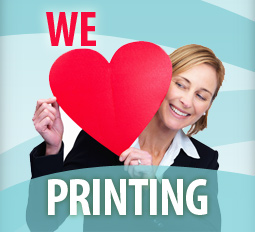More Design Tips
- • How “Category Creators” Inspire and Empower Customers
- • Draw People into Your Story with the Rule of Three
- • Three Steps to Great Design
- • Overcoming Obstacles in Design
- • Try Word Lists for Advertising “Gold”
- • Building the Perfect Letterhead
- • Attract Magazine Readers with Short-Form Columns
- • Essential Dos and Don’ts for Adding Beauty to Your Page
- • Grab Them Right Out of the Gate
Overcoming Obstacles in Design

Do you ever lay awake at night, filled with dread due to a problem you have no idea how to solve?
Sometimes barriers seem impenetrable until you start chipping away at a solution. But charting the course can be half the battle, especially when design is involved. You may wonder about the right color combination, the best marketing tool, or how to nail down a reasonable timeline.
With more questions than answers, people often feel trapped or overwhelmed. However, there is a simple tactic to keep momentum flowing, and this starts by naming your challenge. Effective project managers place significant emphasis on two things:
1. Visualizing obstacles
2. Making a strategic plan to deal with them
Identifying Environmental and Technical Obstacles
If you are facing a design challenge today, can you clearly verbalize the problem at hand?

Grab a blank page or a whiteboard and start writing. You might be surprised how the fog lifts from your brain as you articulate obstacles or limitations. Is your problem one of these?
-- Lack of time
-- Lack of design experience
-- Budget restrictions
-- Questions about the right software or print materials
-- Inadequate staff support
-- Uncertainty about project direction
-- Competitive disadvantages in your field
For each item you list, ask follow-up questions like, what will happen if this obstacle remains? What are the issues and pressures involved? Can this obstacle be eliminated or avoided? What help could I get from others?
By facing these issues head-on, you can snap yourself out of a rut and into a solutions-based mindset. Even in verbalizing your worst fears, you can find clarity on what is blocking your success. Here you can avoid a potential dead-end or clarify the best course of action.
Still Stuck? Help is Here!

If you’re still stumped after analyzing the problem, perhaps you need an experienced eye or an outside perspective.
Working with a local printer may jog a creative idea, allow you to outsource part of a project, or present cost-effective alternatives you hadn’t considered. When you feel paralyzed, collaboration is key. And print specialists are experts at neutralizing or overcoming a seemingly insurmountable obstacle.


Managing Corporate Design: Best Practices for In-House Graphic Design Departments
by Managing Corporate Design: Best Practices for In-House Graphic Design Departments
Corporations increasingly view graphic design as a core strategic business competency in a highly competitive climate, and they are challenging their in-house designers to supply far more than a service or support function. Their new role is to provide sound solutions to real-world business pressures. Managing Corporate Design addresses—head-on—these new challenges in a highly practical manner.
Peter L. Phillips writes specifically to corporate in-house graphic design groups searching for positive, accessible methods to better establish their group as a core strategic business competency.




Share this